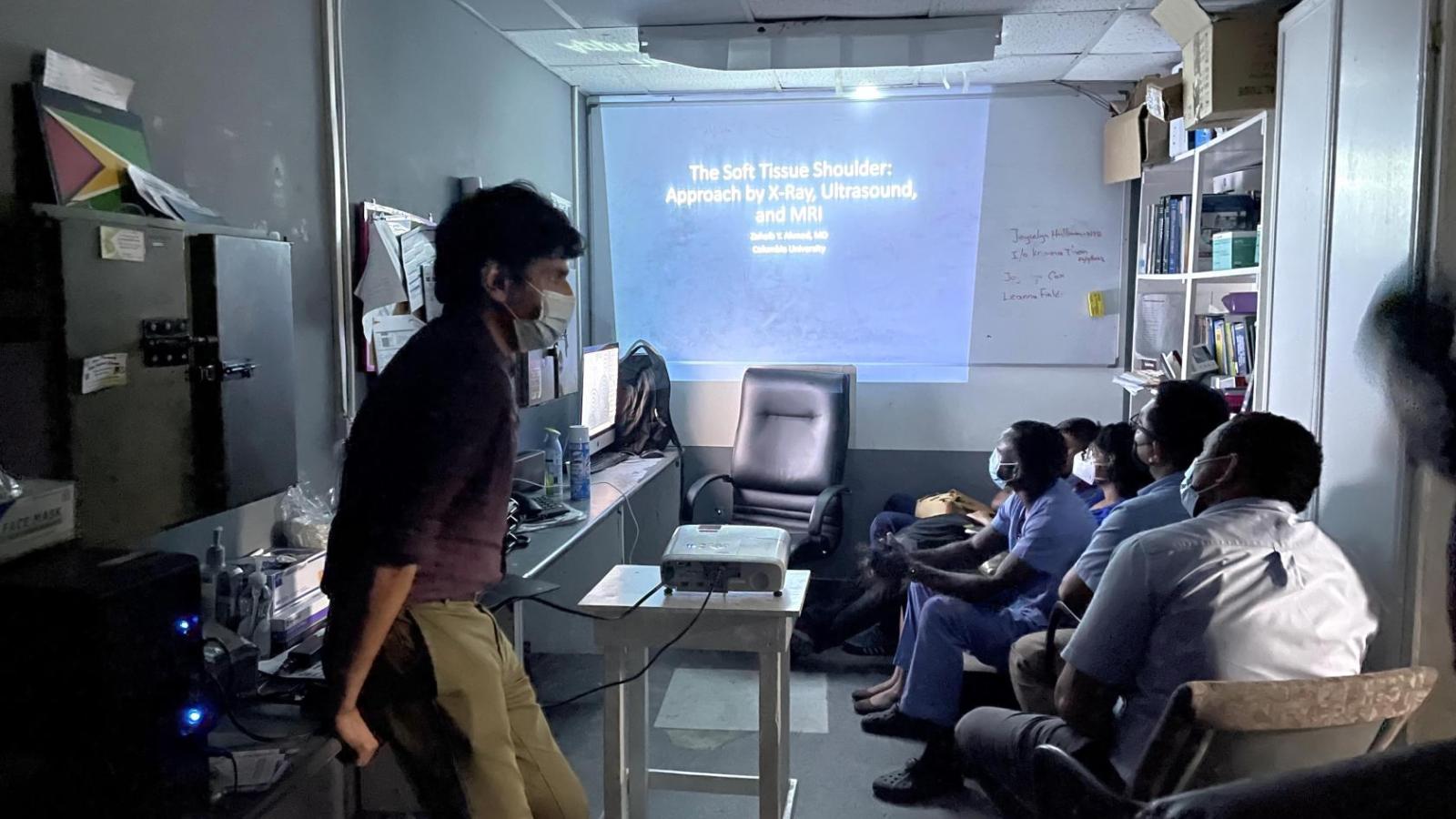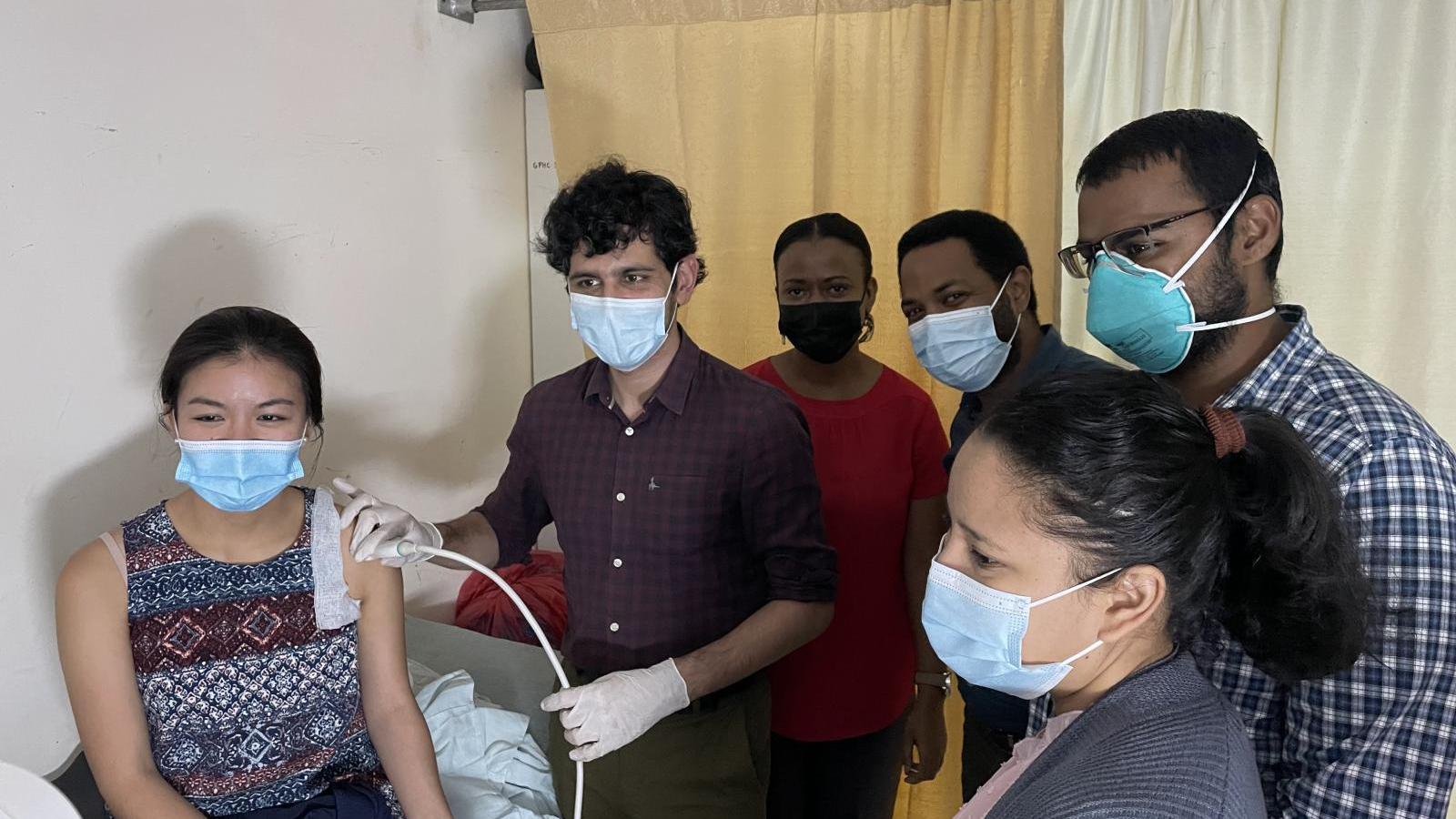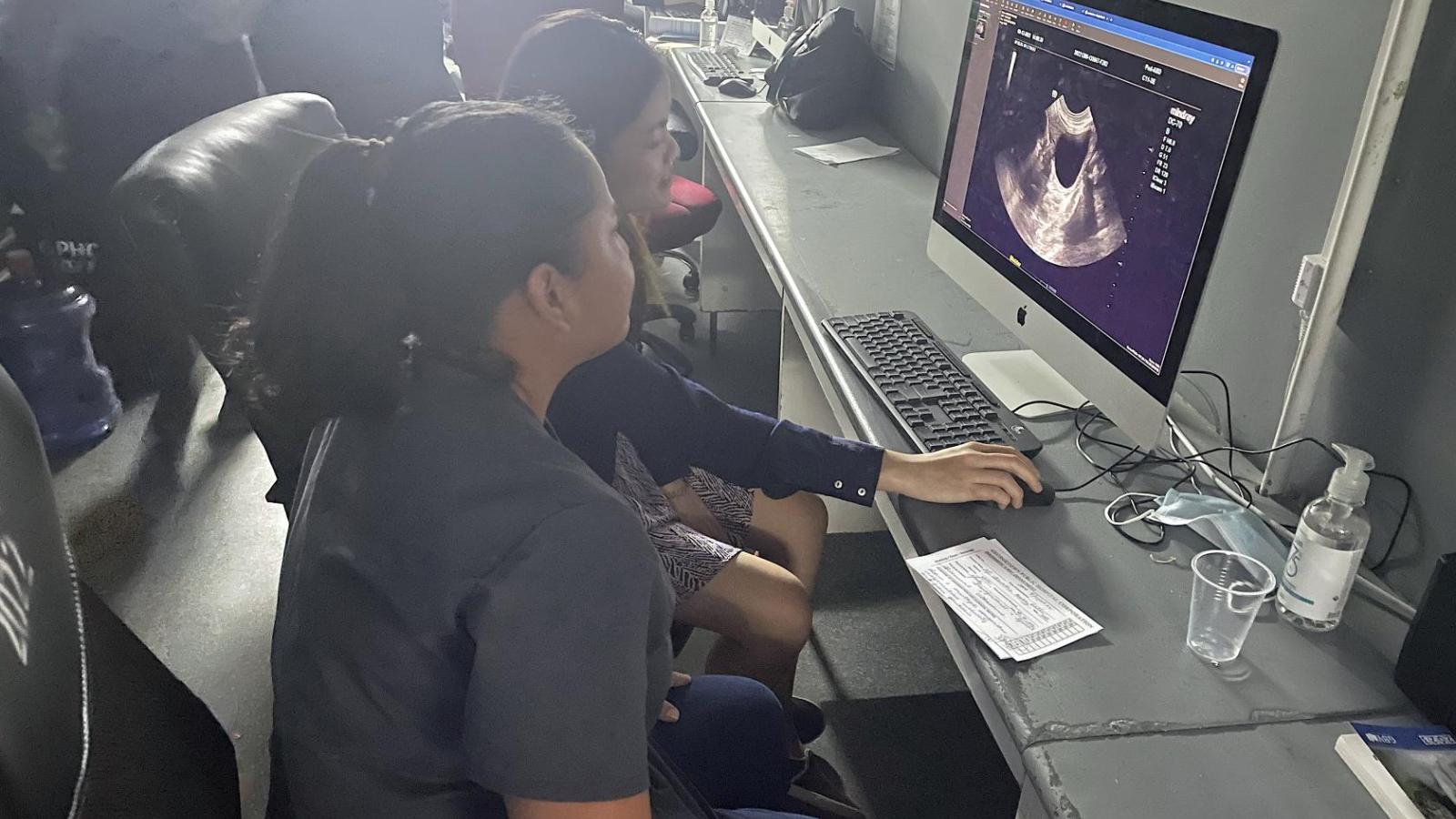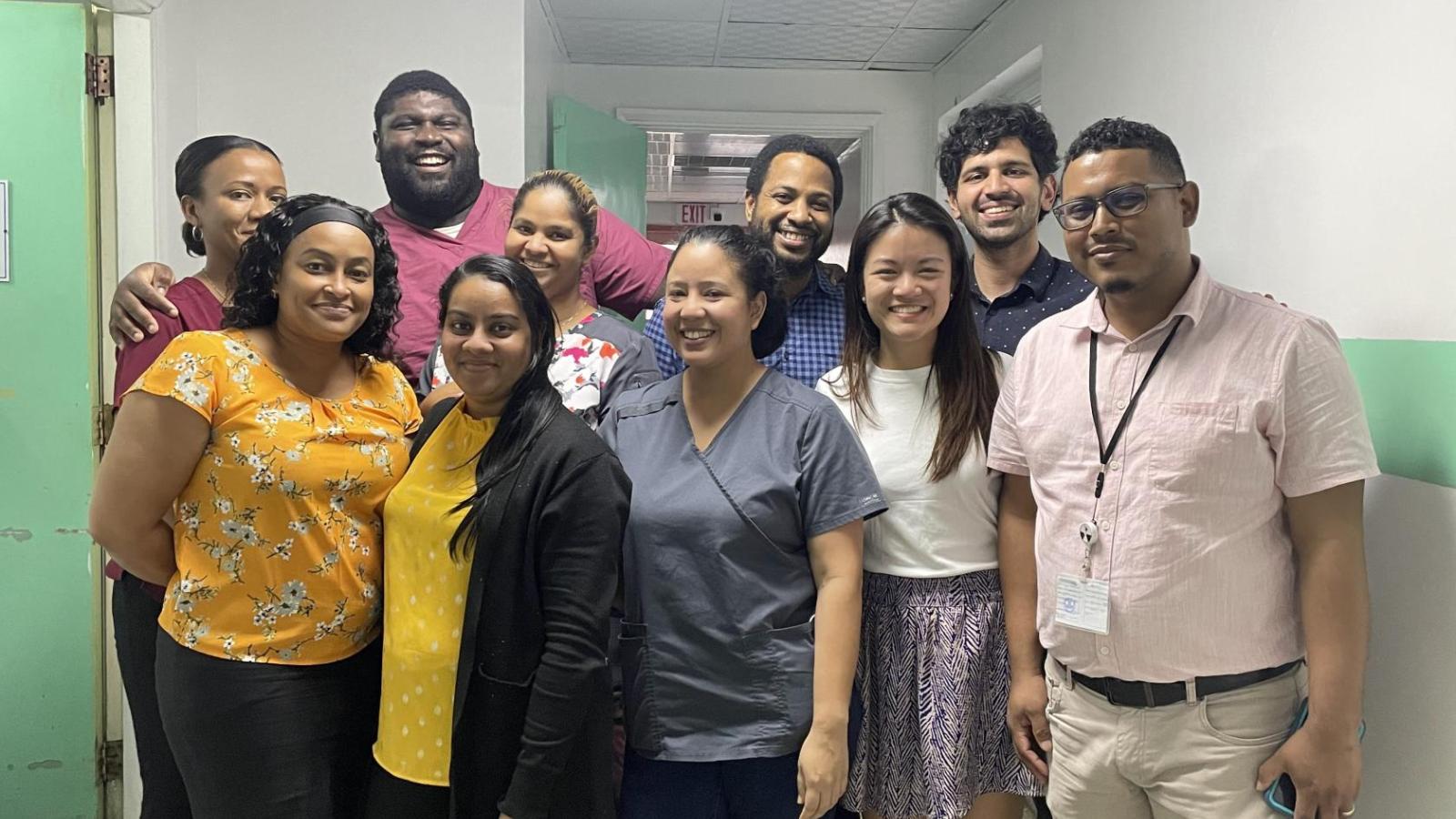
Columbia Radiology Visits Georgetown Public Hospital Corporation
Hands-on Support and Education for Guyana's Radiology Residents
Faculty and residents from the Department of Radiology at Columbia University Irving Medical Center (CUIMC) and NewYork-Presbyterian travelled to Guyana's largest public hospital in December to provide in-person support for the hospital's Radiology Residency Program. The trip, organized in collaboration with RAD-AID International, was Columbia Radiology's first on-site visit since 2019.
Zohaib Ahmad, MD, assistant professor of radiology at CUIMC, led the week-long trip accompanied by third-year radiology resident Edwin Mathieu, MD, and second-year radiology resident Connie Liou, MD.
Established in 2017, the radiology residency at Georgetown Public Hospital Corporation relies heavily on RAD-AID volunteers to provide resident education and assist with read-outs. Most of the support is provided virtually. Liou, Matheiu, and other radiology residents at Columbia have participated in this effort by providing monthly virtual lectures for the Guyanese residents since 2021. In 2019, residents and faculty from the department travelled to Guyana, but the COVID-19 pandemic prevented further on-site visits.
"The residents in Guyana haven't had a lot of in-person teaching," says Ahmad, a fellowship-trained musculoskeletal radiologist. Recent graduates of the program, called registrars, now provide in-person resident education, says Ahmad, but registrars have the same educational gaps as the residents they are teaching. Bringing in support from outside helps fill those gaps, with musculoskeletal radiology being just one example. "They really appreciated having someone who knows musculoskeletal radiology because there's a huge need," says Ahmad. "There's a lot of MSK that they don't get taught."
Over the course of the week-long visit, Ahmad provided a hands-on musculoskeletal ultrasound workshop, lectures, and one-on-one musculoskeletal radiology instruction through read-outs. Matheiu and Liou provided support by reading CT and ultrasound with the residents.
Liou and Matheiu both emphasize how important it was to get a first-hand look at the resident schedule. "We were scheduling the virtual lectures for when it was convenient for us," says Liou, "but that was their busiest time of day." Going forward, Liou says, they will move the virtual lecture program to align with a time when the residents are more available.
Radiologists and residents at the hospital support one CT scanner, a mammography suite, and ultrasound. The hospital also does a large volume of X-rays, which are primarily read by the ordering physicians. Next year, they expect to receive an MRI scanner through a corporate donation.
Looking ahead, the team sees a huge need for both virtual and in-person MRI instruction in anticipation of the scanner, and they hope that Columbia will become a key partner in providing this instruction. "They definitely have an infrastructure that benefits them and will prove vital as they continue to build their radiology program," says Matheiu. "But there are gaps, and we can help."
Ahmad emphasizes that the benefits go both ways, and Columbia's residents also benefit from the partnership. "I think it's important to see how radiology is done when you don't have the resources we have," he says. "There's so much to learn from seeing a different healthcare system. The pathology is very different. You have to change your differential and think in a different way."
References
More Information
Read a day-by-day account of the trip: Guyana Journal





